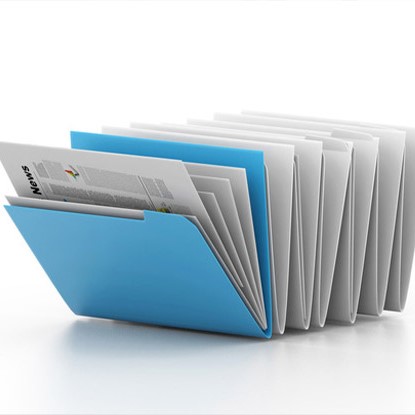Data Validation: An Important Step
for Invoice Processing Accuracy


Data validation is the cornerstone of efficient and accurate invoice processing. By meticulously checking and verifying invoice data, businesses can identify and correct errors early on, preventing costly delays and ensuring timely payments.
In the world of business, accurate invoice processing is crucial for maintaining financial health and ensuring compliance with regulations. However, with the volume of invoices that businesses handle, it’s easy for errors to slip through the cracks. This is where data validation steps in, playing a pivotal role in safeguarding the integrity of invoice processing.
Data validation is the process of checking and verifying the accuracy of invoice data. This includes ensuring that the invoice number, date, vendor information, product or service details, quantities, unit prices, and total amounts are correct.
By meticulously scrutinizing each invoice, data validation helps to identify and correct any discrepancies or errors before they can impact the financial well-being of the business. In this article, we will guide you through the process of invoice data validation and best practices to use daily to ensure invoice accuracy.
Streamline Invoice Processing and Eliminate Errors
In today’s fast-paced business landscape, efficiency and accuracy are paramount. Manual invoice data validation is a time-consuming and error-prone process that can hinder productivity and compromise financial integrity. InvoiceAction offers a revolutionary solution to this challenge, transforming invoice processing into a seamless and error-free experience.
Book a demo now
Data validation plays an even more critical role in businesses that have automated their invoice processing. Automating the process can save time and effort, but it also increases the risk of errors if the data is not validated before processing begins.
By incorporating invoice data validation into the automation process, businesses can ensure that automated invoice processing remains accurate and efficient.
Proper data validation is essential for several reasons:
Unlock a World of Order Efficiency
OrderAction leverages sophisticated algorithms to automate the incoming sales order process, eliminating the need for manual data entry and inspection. This empowers businesses to handle a high volume of orders with unmatched efficiency, ensuring that every sales and purchase order is processed
accurately and promptly.
Book a demo now
Invoice data points are the essential pieces of information that make up an invoice. These data points provide the details of the transaction between a vendor and a buyer. Properly maintaining and processing invoice data points is crucial for accurate financial records, compliance with regulations, and timely payments.
Proper invoice data facilitates timely payments to vendors, ensuring smooth cash flow and avoiding late payment penalties. Accurate and complete invoice data ensures that financial records are accurate, reliable, and compliant with regulations.
In addition, scrutinizing invoice data can help identify potential fraudulent activities, such as duplicate invoices or inflated prices.
Accurate invoice data is essential for preparing financial statements, budgeting, and forecasting. Secondly, analyzing invoice data can help identify areas for cost savings and negotiate better deals with vendors. Up-to-date invoice data is crucial for ensuring accurate tax reporting and avoiding audits.

By understanding and maintaining the integrity of invoice data points, businesses can effectively manage their finances, maintain compliance, and make informed business decisions.
Data validation is a crucial process in ensuring the accuracy of invoice data points. It involves meticulously checking and verifying the consistency, completeness, and adherence to formatting rules of invoice information.
This systematic approach to invoice management helps to detect and correct errors before they can impact the financial well-being of the business.
Data Formatting and Structure: Ensuring that invoice data fields are formatted correctly, such as using the appropriate data type, decimal precision, and character encoding.
Data Field Ranges and Limits: Checking that invoice data values fall within acceptable ranges and limits, such as ensuring that product quantities are positive numbers and that unit prices fall within set price ranges.
Data Relationships and Logic: Validating the relationships between different data points, such as ensuring that invoice amounts match the sum of individual line item amounts.
Duplicate Detection and Removal: Identifying and removing duplicate invoice records to prevent discrepancies and ensure data integrity.
Missing Data Detection and Correction: Identifying and correcting missing data points to ensure that all required information is present for accurate processing.
Data Reconciliation: Comparing invoice data against other relevant data sources, such as purchase orders or inventory records, to identify discrepancies and ensure consistency.
Rule-Based Validation: Utilizing predefined rules and algorithms to check for specific patterns, formats, and relationships within the invoice data.
Machine Learning-Powered Validation: Employing machine learning algorithms to analyze historical invoice data and identify patterns that can be used to detect anomalies and potential errors in new invoices.
Visual Inspection and Data Profiling: Conducting visual inspections of invoice data and utilizing profiling tools to identify trends, patterns, and anomalies that may indicate errors.
Human Review and Expertise: Leveraging the expertise of experienced financial professionals to review and validate invoice data, especially for complex or high-value transactions.
By implementing a comprehensive data validation process, businesses can significantly reduce the risk of invoice errors, maintain accurate financial records, and foster trust with their vendors. Accurate invoice data serves as a foundation for informed decision-making, timely payments, and improved cash flow management.
Eliminate Wasted Resources and Reduce Costs
Manual invoice data validation is a drain on resources, consuming employee time, energy, and productivity. ArtsylPay eliminates these burdens thanks to its seamless integration with your accounting tools, freeing up valuable resources to focus on strategic initiatives and revenue-generating activities.
Book a demo now

Manual data validation and automated validation techniques are both essential for ensuring the accuracy of invoice data points. However, they differ in their approach and effectiveness in detecting and correcting errors.

Manual data validation involves human reviewers manually checking and verifying invoice data. This approach can be effective for small volumes of invoices or for specific data elements that require human judgment. However, it is labor-intensive, prone to human error, and does not scale well for high-volume invoice processing.
RELATED: Manual Invoice Processing vs Automated Invoice Processing
Automated data validation utilizes software tools to scan and analyze invoice data. This approach is more efficient, consistent, and scalable than manual validation. Automated validation tools can check for a wide range of errors, including format inconsistencies, data ranges, relationships, duplicates, and missing data. They can also be integrated into existing accounting and finance systems to streamline the validation process.
Comparison of Manual and Automated Validation
| Feature | Manual Validation | Automated Validation |
| Approach | Human reviewers manually check data | Software tools scan and analyze data |
| Efficiency | Inefficient for high volumes | Scalable for high volumes |
| Consistency | Prone to human error | More consistent and accurate |
| Flexibility | Difficult to adapt to changes | Can be easily adapted to changes |
| Cost | Low initial cost but high labor costs | Higher initial cost but lower ongoing costs |
For businesses that handle a high volume of invoices or that require a high level of accuracy, automated data validation is the preferred option. However, manual validation can still be useful for validating specific data elements or for performing spot checks to ensure the accuracy of automated validation results.
The most effective approach for businesses is to combine manual and automated validation. This allows for the strengths of each approach to be leveraged. Manual validation can be used to verify the accuracy of automated validation results, while automated validation can be used to identify and correct a wider range of errors.
By implementing a comprehensive data validation strategy that combines manual and automated techniques, businesses can achieve the highest level of accuracy, efficiency, and scalability in their invoice processing.
Enhance Financial Integrity and Foster Trust
Accurate invoice data is the cornerstone of sound financial management and business success. docAlpha IPA ensures that every invoice is processed with meticulous precision, eliminating the risk of errors,
fraud, and discrepancies.
Book a demo now
The systematic procedure undertaken by businesses to verify the accuracy and authenticity of invoices received from suppliers or vendors before processing payment. This process ensures that invoices adhere to established standards and are error-free, based on guidelines and methodologies for conducting invoice validation efficiently and effectively. These practices encompass strategies, processes, and tools that help businesses maintain data integrity and compliance while minimizing errors.
A series of checks and reviews conducted on invoices to confirm that the data and information presented are precise and complete. Accuracy checks help prevent payment errors and discrepancies.
The use of software and automated systems to validate invoices efficiently and consistently. Automation helps reduce manual effort, enhances speed, and minimizes errors in the verification process.
This is the level of accuracy, completeness, and consistency of data within an invoice. High data quality ensures that the information presented in an invoice is reliable and can be used for financial and operational decision-making.
Businesses use specialized software designed to streamline and automate the process of invoice validation. It typically includes features such as data extraction, validation rules, and reporting to enhance the accuracy and efficiency of invoice verification.

The process of identifying and correcting errors, inconsistencies, and inaccuracies in invoice data. Data cleansing aims to improve data quality by ensuring that information is reliable and up to date. It also involves the identification of mistakes, discrepancies, or irregularities in invoices during the verification process. Detecting errors is crucial to preventing incorrect payments and maintaining financial accuracy.
RELATED: Benefits of Invoice Automation
These include procedures and reviews conducted to ensure that invoices adhere to legal and regulatory requirements, as well as internal company policies. Compliance checks help avoid legal issues and maintain ethical practices in business operations. Also, businesses use techniques and measures used to identify fraudulent invoices or billing schemes. Fraud detection helps protect businesses from financial losses due to fraudulent activities.
There are various tools and techniques available for data validation, including:
By employing these tools and techniques, businesses can effectively validate invoice data and ensure that their financial operations run smoothly.

Intelligent process automation is not just a trend; it’s the future of invoice processing. Businesses that embrace intelligent invoice automation with InvoiceAction will gain a competitive edge, enhance financial efficiency, and drive sustainable growth. Join the vanguard of organizations that are transforming invoice processing with Artsyl.
In conclusion, data validation is an indispensable part of invoice processing, ensuring the accuracy, compliance, and overall quality of financial operations. By prioritizing data validation, businesses can safeguard their financial health and gain valuable insights from their invoice data to make informed decisions for future growth.
Invoice data validation is the process of verifying the accuracy, completeness, and integrity of information within an invoice before it is accepted and processed for payment. This involves scrutinizing various details such as amounts, dates, vendor information, and other relevant data to ensure they comply with predetermined criteria, business rules, and standards.
The importance of invoice data validation lies in:
Automation streamlines the validation process, reduces human error, and accelerates verification. Specialized software can extract data, apply validation rules, and flag discrepancies efficiently.
Common challenges of data validation include manual data entry errors, inconsistent invoice formats, missing or incorrect information, and the need for timely verification. Detecting invoice fraud involves using advanced verification techniques, such as pattern recognition and anomaly detection, while prevention includes implementing strong internal controls and vendor verification processes.